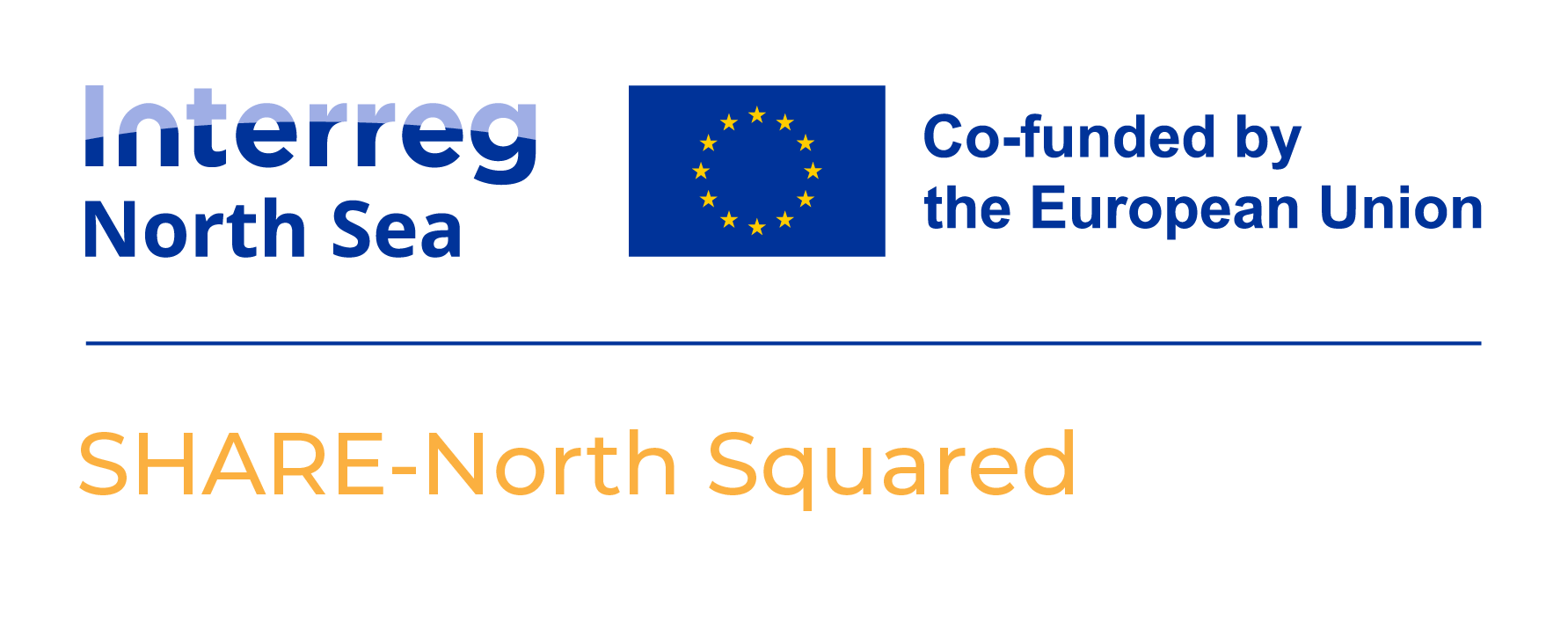Ghent, Belgium, April 22nd to 25th, 2024 – The SHARE-North Squared project partners convened in Ghent for a series of meetings aimed at advancing their collaborative efforts to promote sustainable urban mobility through shared mobility solutions.
WHAT WE LEARNED ABOUT SOCIAL HOUSING IN GHENT:
Thuispunt Ghent, Gents publicly owned social housing company and member of our partner Housing Europe, shared its experiences and challenges in integrating shared mobility into new developments. Here are some interesting facts:
- The bike parking norm


- The parking norm for social housing is lower than the one for private buildings in Ghent.
- New rules from 1 August 2024:
- Include parking spaces for car sharing
- You can substitute 20 % of parking spaces for car sharing spaces, but 1 shared car can replace max. 4 parking spaces.
- Only build car parking spaces underground = extremely costly.

A case study:
- Rabot Towers:
- 140 apartments
- First time Thuispunt Gent will integrate shared mobility in their projects.
- Not obligated to build parking spots if they promote shared mobility for their tenants and if they provide 2 parking spaces for shared cars.
WHAT WE LEARNED ABOUT SOCIAL HOUSING IN GENERAL:
Afterward, an interactive exercise known as the Fishbone Diagram was conducted by Clara Mafé from Housing Europe to explore the complexities of implementing shared mobility in social housing developments. This exercise allowed participants to visually map out three controversial assessments about car sharing in social housing:
- YES ABSOLUTELY, but there are rare exceptions! Shared Cars should always be available to the public. Only in closed systems like cohousing developments, it can be an asset to keep shared cars in a closed system
- AN EXAMPLE: peer-to-peer car sharing is within a closed group based mostly on proximity.
- CONCLUSION: If you close the system, people need to be aware that it will cost more. It should be allowed to combine systems: a combination of closed systems and open systems works best.


II. Implement shared mobility only if public transport is sufficient.
- YES ABSOLUTELY, but shared micromobility can close gaps for last mile solutions in suburban areas. Whereas carsharing in social housing should only be implemented, if there is sufficient access to public transport or other modes of transport that is a prerequisite for people who depend on their own car otherwise!
- AN EXAMPLE: Bergen is working on placing e-scooters in suburban areas, because the public transport is poor. The e-scooters are mostly used for closing the gap where public transport is not sufficient and as a last mile solution.
- CONCLUSION: There are different solutions for different regions. The need for good and sufficient transport will not be solved by shared mobility, but it can still offer some solutions.
III. Tensions arise between tenants in case of damage or payment issues.
- CREATING A GOOD SYSTEM: tension often arises when people don’t know how the system works or who they can go to for information. Making sure that there is a good system in place to manage the shared mobility offer, can make all the difference.
- AN EXAMPLE: using a board or association of co-owners that earns money through shared mobility could drive them to implement a good system to implement shared mobility.
- CONCLUSION: If you organize things well and communicate them appropriately, tensions that do arise can be solved by a third party. But overall, less tensions will arise to begin with.

WHAT WE LEARNED ABOUT THE SHARE-NORTH SQUARED PARTNERS:
Instead of a presentation, all partners were asked to update the consortium with a flashy poster showing their progress, plans and challenges since the last partner meeting.
The SHARE-North Squared partner meeting in Ghent underscored the collaborative spirit and shared commitment to sustainable shared urban mobility amongst the project partners. By exchanging knowledge, experiences, and best practices, the partners aim to accelerate the adoption of shared mobility solutions and contribute to the transformation of urban real-estate developments across Europe.
Written by: Cornelia Cordes and Steffie De Moor
Pictures by: Steffie De Moor

